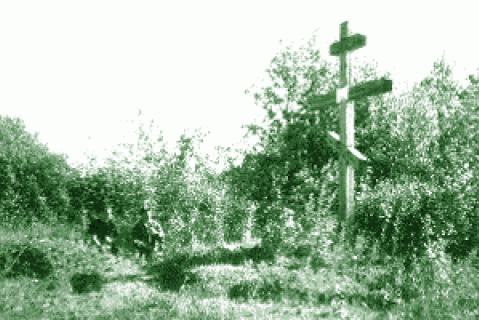On 21 October 2023 it was reported that a memorial to “the victims of Soviet repression” had been demolished in Vladimir. Yet it was not the city’s only memorial of the kind.
In 2021, a gathering led by the local Memorial Society and supported by city authorities was held on the Day of Remembrance for the Victims of Political Remembrance (30 October) in the Bogoroditse-Rozhdestvenskoe monastery. Some kind of gathering will presumably take place there today.

Last year such meetings were organised across Russia, usually by the local authorities, and were sometimes attended as in Perm by successor organisations to Memorial (banned in early 2022).
A remarkable online resource, “Russia’s Necropolis of Terror and the Gulag” (also known as the Map of Memory) helps to make sense of this shifting official and public response. Today, some 1,800 sites are known across the country where the victims of the Soviet regime lie buried. In 2014, the Joffe Foundation contacted the local authorities for information about the location and use of such burial grounds and selected four hundred of the better documented for its proposed website.
2016
The Map of Memory duly appeared in 2016; an English version was launched on 5 August 2021. The sites it lists are scattered between town and country across the length and breadth of Russia. A few relate to the savagery of the Civil War; most were linked to the mass crimes of the 1930s to 1950s.
The sites were divided into three main groups: the secretly interred remains of those shot during the Great Terror (1937-1938); burial grounds of the Gulag; and deportees graveyards — the latter extending from the “dekulakisation” of the early 1930s to the wartime and postwar deportees of many nations (notably Germans, Poles and Lithuanians).
A few sites were unused and lack visual documentation. Most had memorials and became the focus for a variety of activities: ceremonial events occurred at two thirds of the sites, many were also the subject of excursions and were used for cultural and educational purposes.
At the same time the overwhelming majority lacked any formal protection. Only a quarter of sites associated with the Great Terror were protected. Less than one in ten Gulag burial grounds and deportees graveyards were protected.
Karelia
Karelia presents an exceptional picture. Seven of the 11 Karelian sites on the Map of Memory are protected: no other Region or Republic has made a remotely similar attainment. This is due largely to the work of Yury DMITRIEV, his mentor Ivan CHUKHIN and their supporters.
Chukhin tracked down a list indicating where the burials of the Great Terror had been made. Over the next thirty years Yury Dmitriev and others located six of those 14 sites, most famously Sandarmokh in July 1997, and helped to erect monuments or create memorial complexes at each. Dmitriev and others found three Belbaltlag burial grounds where prisoners who built the White Sea Canal are buried and they also acquired protected status.
When he was arrested in December 2016, Dmitriev was preparing for publication a comprehensive list of all the forced settlers sent to Karelia in the 1930s — some 80,000 men, women and children whose descendants account for a quarter to one third of the republic’s present-day population.
Two narratives
An awareness of the crimes of the Soviet regime has not become a complete and inalienable part of Russia’s concept of itself as a nation, comments the director of the Joffe Foundation. As before, she writes, people retain fragmentary recollections of particular events and do not link them in a comprehensive view of the past.
In creating the Map of Memory, the Joffe Foundation offered one narrative of Russia’s recent 20th-century past. As the controversy over the supposed burial of Soviet soldiers in Sandarmokh showed, this account is in conflict with another officially imposed narrative of National Tragedy.
This found expression in the Wall of Sorrow erected in Moscow, the regime’s failed attempt to achieve closure, to end discussion of the past. It also explains the demolition of the monument to those who died in the Vladimir Prison, because the attached plaques commemorated Ukrainian, Polish, Estonian and Japanese inmates.
For two elements of the National Tragedy narrative are a focus on the Great Terror (1937-1938) to the exclusion of all other mass crimes and a refusal to recognise that any nation other than the Russians suffered under the Soviet regime.
With regard to Karelia, this is clearly shown by the Ministry of Culture’s Unified Register of Sites of Cultural Heritage: it currently lists as protected four sites of secret interment of the Great Terror (Petrozavodsk, Krasny Bor, Pudozh and Sandarmokh) but fails to include the Sosnovets, Belomorsk and Letnerechensky burial grounds of Belbaltlag prisoners.

Belomorsk: Belbaltlag burial ground
With regard to the thousands of Poles deported and executed as a result of the now unmentionable Nazi-Soviet pact, the results are unsettling and worrying. Last year the annual ceremony of Remembrance at Mednoe (Tver Region) focused solely on Soviet victims buried there; and Katyn is once again described in the Unified Register as the place where the “Hitlerites” murdered thousands of Polish army officers.
John Crowfoot